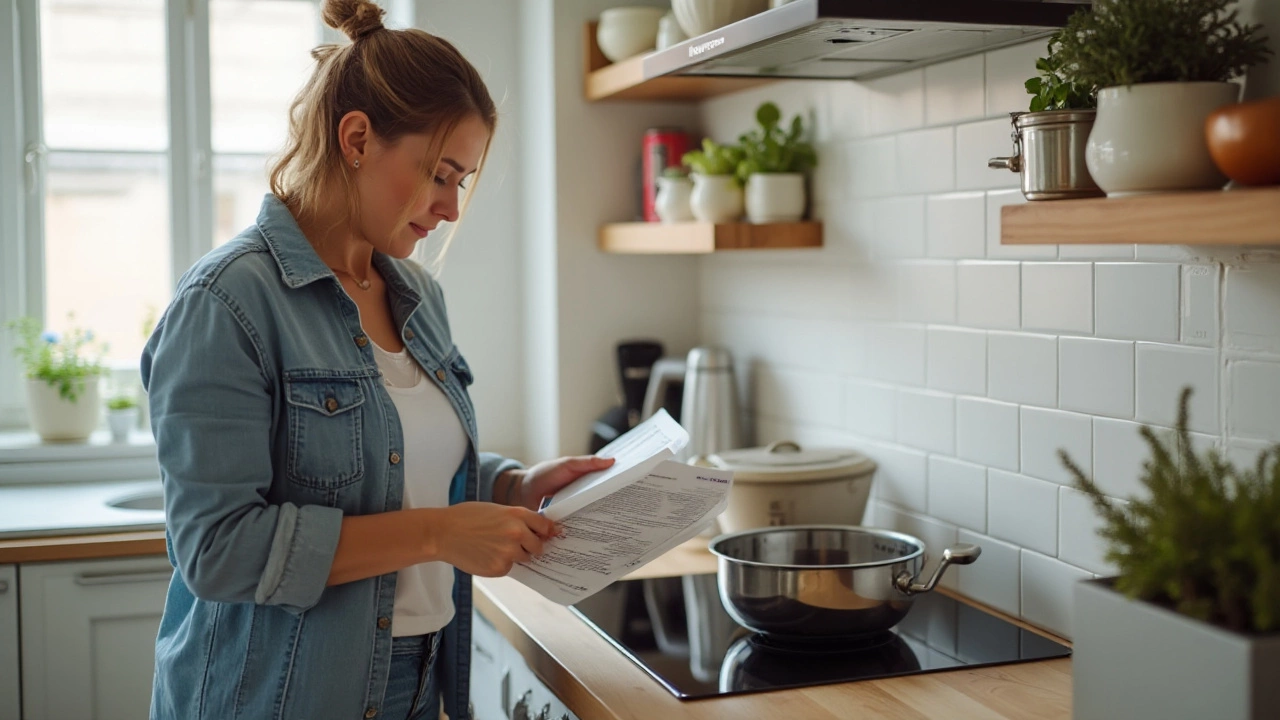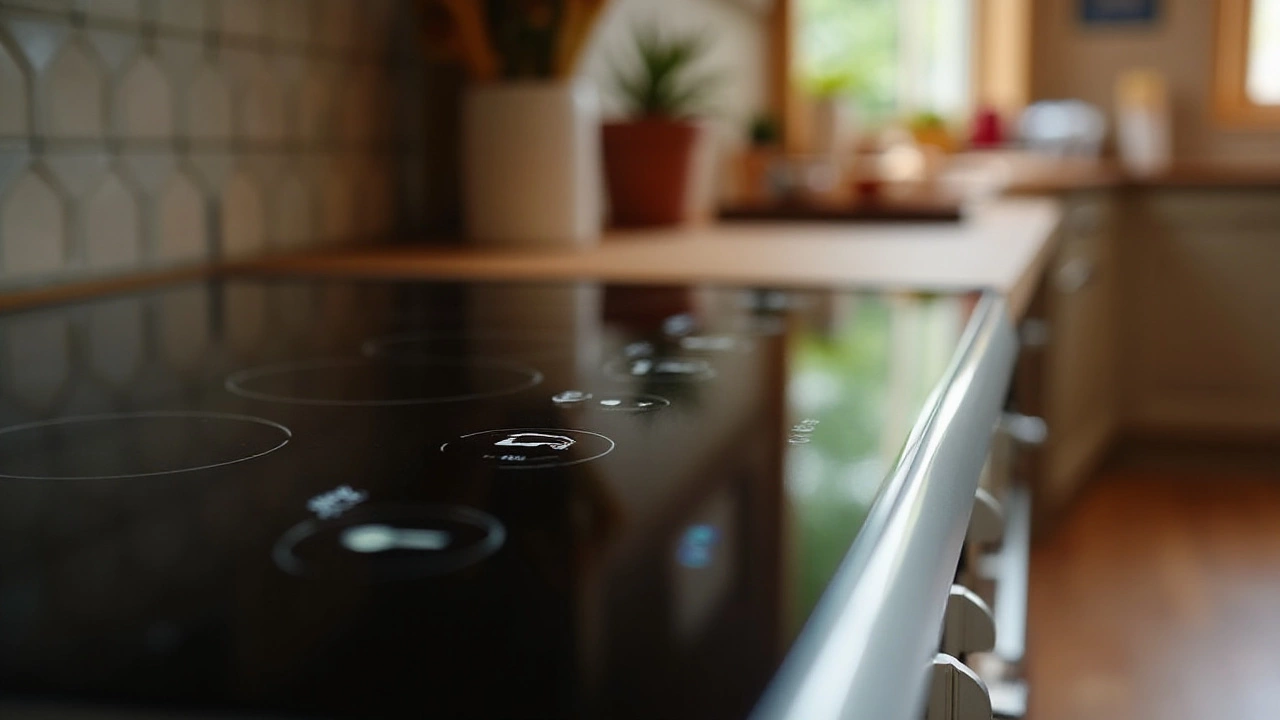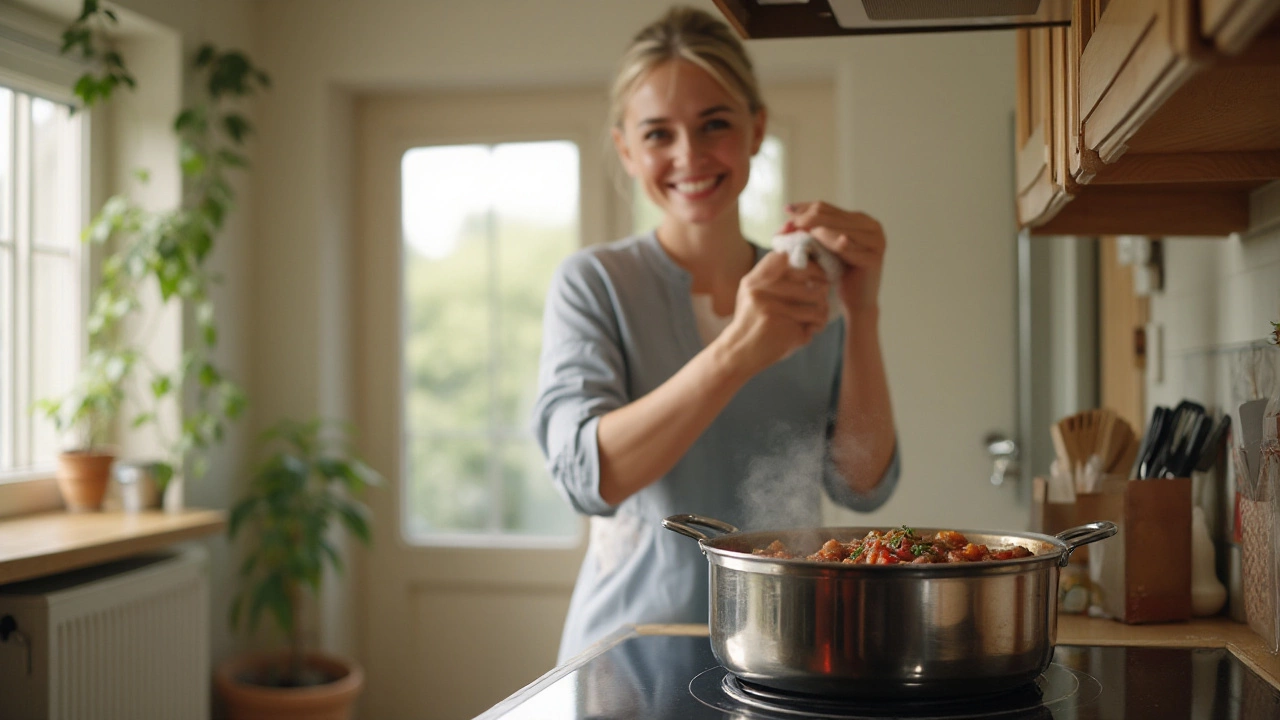Electric hobs are a staple in modern kitchens, offering sleek design and efficient cooking. However, just like any electronic appliance, they can sometimes experience issues that need a quick fix. Resetting an electric hob might seem daunting at first, but it's often simpler than you think.
Before diving into technical manuals or phoning for repairs, there are a few easy steps you can take to try and bring your hob back to life. From understanding its basic functions to recognizing signs that a reset is needed, we'll guide you through the process. Safety is always a priority, so we'll also cover some essential tips to keep in mind.
Whether you're dealing with unresponsive controls or uneven heating, this guide will help you identify and address common hob issues. You'll be back to cooking your favorite meals with ease in no time.
- Understanding Electric Hob Basics
- Common Issues Requiring a Reset
- Step-by-Step Reset Guide
- Safety Tips and Maintenance
Understanding Electric Hob Basics
Electric hobs revolutionized the way we cook with their blend of technology and efficiency. Unlike gas stoves that rely on open flames, electric hobs use electricity to heat up and, depending on the type, might employ radiant heat, induction, or ceramic heating methods. Each type has its nuances, making electric hobs versatile kitchen companions. Radiant hobs, for instance, use coil elements beneath a smooth glass-ceramic surface, which heats up and transfers this heat to cookware. In contrast, induction hobs use electromagnetic fields to directly heat the cookware, offering precise temperature control and reduced cooking times. Such variety ensures that there is an electric hob perfectly suited for every cooking style and need.
Understanding how your electric hob functions can help identify the root of any problems and determine when a reset might be necessary. Basic features often include touch controls for precise heat settings, safety locks, and sometimes even timer functions to automate your cooking process. It's essential to familiarize yourself with your model's specific features, as well as the manufacturer's guidelines for operation and maintenance. Many hob issues, like unresponsive controls or an inability to heat properly, can often be traced back to simple glitches. Resetting the hob could clear these temporary problems, bringing the appliance back to its normal working condition.
The energy efficiency of electric hobs is another factor worth considering. Many modern models are designed to maximize energy use, heating up immediately and cooling down just as swiftly. As a result, they often boast energy efficiency ratings that can save users money over time. Additionally, surfaces are relatively easy to clean, as spills cannot seep beneath the surface like they can with traditional coil burners. According to recent data, households using electric hobs report a 20% decrease in energy consumption compared to older gas models. This reduction not only saves money but also contributes to a smaller carbon footprint—a significant consideration in our environmentally conscious world.
Electric hobs also have an important safety edge over other types of cooking appliances. Without an open flame, the risk of fire is significantly reduced. Features like auto-shutoff and heat indicators further enhance user safety, making them ideal for households with young children. Despite these advantages, the intricacy of electric hobs means they can sometimes experience technical issues. Dave Morgan, an appliance technology expert, once said, “The electronic brains of appliances like electric hobs are sophisticated yet temperamental; understanding them is key to tackling minor glitches effectively.” With this knowledge, users are better prepared to maintain their unit’s performance and longevity.

Common Issues Requiring a Reset
An electric hob, a marvel of modern kitchen technology, can sometimes develop quirks requiring a reset. These issues can crop up unexpectedly, sending a seasoned chef into a momentary culinary panic. Understanding these problems can help you diagnose and address them quickly. For instance, one frequent concern is the hob's touch controls failing to respond. This usually happens due to a minor power glitch or after liquid spills on the surface. When the touchpad acts stubborn, your first line of defense might be a reset.
Another issue faced by many home cooks is inconsistent heating across the hob surface. Imagine trying to whip up a perfect risotto, only to find that one section of your hob simmers while another remains cold. This kind of uneven heating can often be rectified through a reset, as it might be attributable to temporary electronic miscommunications within the hob's system. It's fascinating, really, how something as simple as turning it off and on again can solve numerous issues.
In a kitchen appliance survey conducted globally, it was noted that nearly 60% of electric hob users had experienced problems that could be resolved with a basic reset. The data suggests that most common are connection issues, where the electric hob miscommunicates with the home’s electrical supply. Electric hob troubleshooting for these issues often begins with examining the power connections and ensuring they are secure. Additionally, dirt or residue between the controls and the hob’s surface can interfere with functionality. Regular maintenance can prevent these from becoming a problem, but when they do arise, a reset works wonders.
Occasionally, users have reported that the hob displays error codes that aren't covered in the user manual. These codes are the hob's way of pointing out something isn't quite right. Sometimes, they hint at a need for more involved repair, but often, a simple reset is enough to clear them, especially when all other functions seem unaffected. As the author Rita Mae Brown says, "A good reset works magic, much like a cat with a mouse." It's something every hob owner should keep in their toolbox of home appliance tricks.
| Issue | Resolved by Reset (%) |
|---|---|
| Unresponsive Controls | 70% |
| Uneven Heating | 55% |
| Error Codes | 65% |

Step-by-Step Reset Guide
Before you begin the process of resetting your electric hob, it is important to familiarize yourself with the control panel and any secured settings your particular model might have. Most electric hobs have a similar reset procedure, but checking your manufacturer's manual can save time and offer model-specific advice. Begin by ensuring your hob is switched off and unplugged or isolated from the mains power. Safety should always be your top priority when dealing with electrical appliances.
To perform a reset, you'll often start by waiting for a while after disconnecting the power. This is known as a 'power cycle'. It allows the internal electronic systems to rest and clear any temporary faults. After around five to ten minutes, restore the power and observe any immediate changes. If your hob features a digital display, check if any error codes appear, as these can hint at specific issues that may not be resolved by a simple reset.
Some modern electric hobs come equipped with advanced features like child lock or automatic shut-off, which can also play into the troubleshooting process. To reset these features, read the indicator lights on the stove's display. Often, holding down a particular button for a few seconds, like the 'power' or 'lock' button, can deactivate the child lock or reset default settings. This is a good moment to mention the wisdom shared by John Peters, a veteran appliance repair technician:
“Patience and precision are key when troubleshooting appliances. Don’t rush a reset; give each step its due time to work.”
If the problem persists after a basic power cycle, it's worth examining specific components. For instance, if only one burner is malfunctioning, there might be an issue with that specific element rather than the entire unit. You might not need a complete reset but a replacement of a faulty part, like a heating element or a loose wire. If none of the basic attempts work, consider consulting a professional technician. This investigation offers a clearer picture and helps manage situations without compromising safety.
Finally, always keep tabs on your electric hob's health. Routine maintenance can prevent issues and extend appliance life. Regularly clean the hob and the area beneath the knobs to ensure grime doesn't interfere with the electronics. Stay cautious of moisture nearby, as it can lead to false signals within the hob's system. Recognizing when something is amiss early on can save you from more significant headaches later.

Safety Tips and Maintenance
When dealing with any home appliance, especially an electric hob, safety cannot be overstated. While these appliances are designed with modern safety features, it is always wise to apply some best practices to ensure both safety and longevity. Firstly, make sure to thoroughly read the manual provided by the manufacturer, as each electricity-powered hob might have unique specifications or precautions. Electrical components mean water should be avoided at all costs around any active parts of the hob. Keep the hob dry and ensure hands are dry when operating the controls. Regular cleaning of the hob is crucial in maintaining its performance. Residue buildup can not only affect the hob's ability to heat evenly but can also become a fire hazard. Use appropriate hob cleaners or warm soapy water for routine cleaning, but always ensure the appliance is cool to the touch before cleaning it.
Inspections form a vital part of maintenance. Regularly check power cords and connections for any sign of wear or damage. A faulty connection can cause immediate appliance failure or pose an electrocution risk. If you notice any fraying wires or contacts showing signs of burning, it's crucial to turn off the appliance at the mains and consult with a qualified repair technician. Many users might overlook the importance of venting, but ensuring your kitchen is well-ventilated can aid in dissipating heat and reducing the risk of overheating. Providing regular checks not only safeguards the appliance but also the safety of your household. This might trigger thoughts of electrical safety checks once every couple of years - a professional's insight can save a lot more than a broken hob.
"Safety is not a gadget but a state of mind." – Eleanor Everet
In addition to safety, maintenance is equally essential for the optimal performance of your beloved electric hob. Ensuring that food doesn't spill over the hobs not only keeps your kitchen cleaner but also reduces the likelihood of corrosion or damage to the burner and controls. When conducting any maintenance, always make sure that the hob is completely disconnected from its power source. Attempting any troubleshooting while the device is powered can result in severe injury or damage to the hob. Consider performing a detailed cleaning at least once a week, and integrating it into your regular chores. It can be helpful to have a schedule for cleaning, along with purchasing any replacement parts as needed to avoid last-minute hassles.
Lastly, it's wise to be acquainted with how frequently different parts of the hob need replacement. Filters, for example, might need yearly replacements, while burners usually last a little longer. Such regular checks can ensure that your cooking appliance stays as efficient as the day it was first used. Remember, a little caution and regular maintenance can go a long way in extending the life of your kitchen appliances.

I am an expert in the services industry with a focus on appliance repair. My passion lies in understanding how things work and educating others in simple, engaging ways. This enthusiasm fuels my writing, where I delve into topics around appliance maintenance and troubleshooting. I aim to make these subjects clear and accessible to all readers.